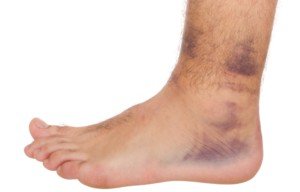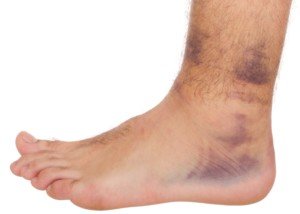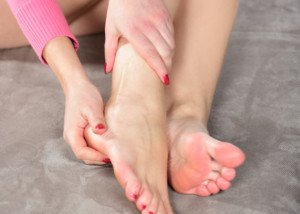Being that very elderly people have such thin skin, the question comes up of whether it’s safe to submerge their sprained ankle in ice water.
Ice water is commonly used for athletes to quickly counteract the swelling from the injury.
A home “ice bath” for a sprained ankle can easily consist of putting ice cubes in a little pail or one of those small washing tubs, then filling it with cold tap water.
The bare foot is then placed against the bottom of the container for 15 to 20 minutes, three times a day.
An elderly person who has just sprained their ankle might be tempted to do this.
“To my knowledge, ice water, per se, does no damage to elderly skin,” says Morton Tavel, MD, Clinical Professor Emeritus of Medicine, Indiana University School of Medicine, and author of “Health Tips, Myths and Tricks: A Physician’s Advice.”
“Although, such cold exposure seems to minimize early swelling, I am unaware of any evidence that is accomplishes any long-term benefits.”
Plunging a bare foot into a container full of ice is a dramatic measure when compared to simply elevating the foot with a cold compress against it.
But the dramatic approach of freezing cold water will not make the sprain heal faster – at least not in an elderly individual – even though, as mentioned, this tactic is commonly used with competitive athletes.
In fact, rehab rooms at colleges often have tanks – literally tanks – of water full of ice for the very purpose of student-athletes sitting at the edge and dunking in their foot.
Treatment of Sprained Ankle in the Elderly
A sprain is an injured ligament. Ligaments hold bones together. A sprain will present with immediate or near-immediate swelling and sometimes discoloration. It will be tender to the touch and hurt when weight is put on it.
The elderly person should receive an X-ray to make sure there isn’t a broken bone.
A pack of ice (i.e., ice cubes in a tightly sealed sandwich bag) will do just fine, placed firmly against the swollen area.
The ankle should also be taped to keep the foot in a neutral position (90 degree angle between the top of the foot and the front of the lower shin).
Ankle “braces” that stabilize this joint are also on the market and are sold both online and at drug stores.
The foot should be elevated as much as possible (when watching TV, using the computer, eating, reading).
And the person should stay off of it as much as possible while it heals; no gardening, dog walking or non-essential housework until the ankle starts feeling better.

Dr. Tavel’s medical research includes over 125 publications, editorials and book reviews in peer-reviewed national medical journals. He was formerly director of the cardiac rehabilitation program at St. Vincent Hospital in Indiana. mortontavel.com
 Lorra Garrick has been covering medical, fitness and cybersecurity topics for many years, having written thousands of articles for print magazines and websites, including as a ghostwriter. She’s also a former ACE-certified personal trainer.
Lorra Garrick has been covering medical, fitness and cybersecurity topics for many years, having written thousands of articles for print magazines and websites, including as a ghostwriter. She’s also a former ACE-certified personal trainer.
.










































